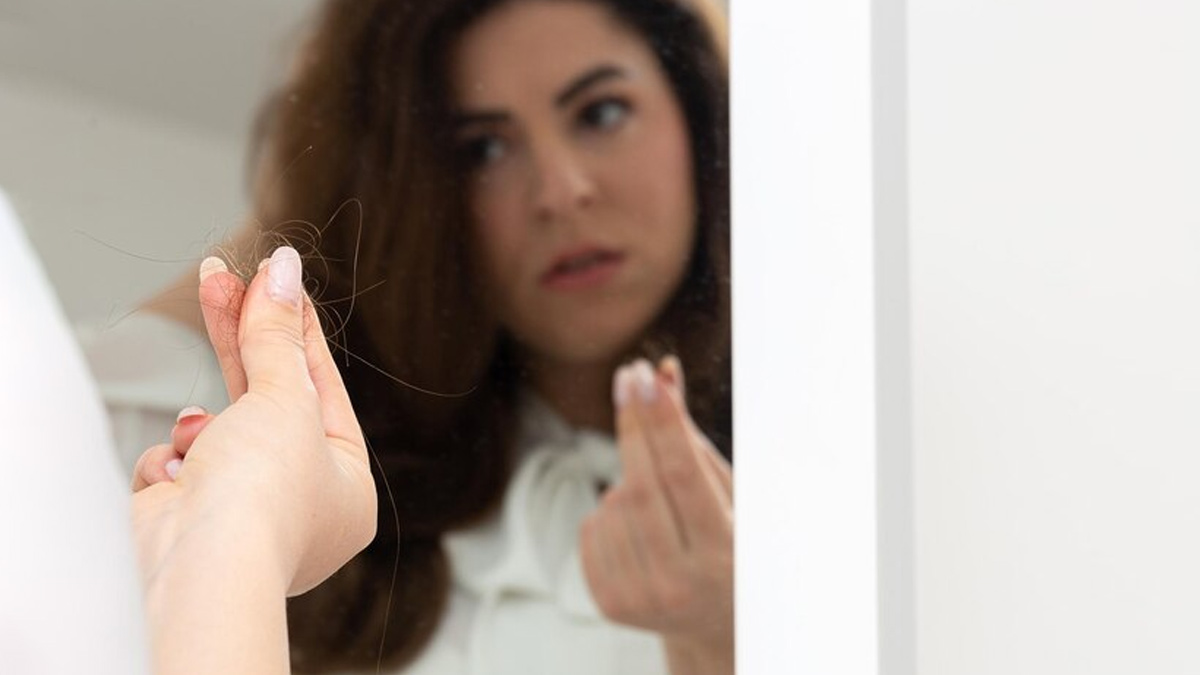
Trichotillomania, commonly known as "hair-pulling disorder", is a type of impulse control disease. People with trichotillomania have an uncontrollable need to pull out their hair, mainly from their scalp, eyelashes, and brows. They are aware that they can cause harm, yet they frequently lack the ability to control their impulses. When they are upset, they may end up plucking out their hair while trying to relax.
Table of Content:-
In an interaction with OnlyMyHealth editorial team, Dr. Oshin Agrawal, Consultant Dermatologist, Fortis Noida explained all about trichotillomania.
Trichotillomania is also considered a mental health condition. It comes from three Greek words Tricho which means hair, tillo means to pull and mania is defined as excessive behaviour or any sort of activity.
In this condition patients have a compulsive urge to pull out their own hair. It can affect any age group, adolescent, teen or adult.
According to Dr. Oshin, trichotillomania can be caused by several factors such as:
- Certain mental health issues like anxiety and depression
- Stress coping mechanism
- Substance abuse related to drugs
People generally pull hair from their scalp, eyelashes and eyebrows, and pubic hair.
Also read: 4 Tips To Effectively Reduce Hair Fall In Winters
Symptoms Of Trichotillomania
Symptoms that may accompany recurrent hair pulling include:
- Tension before pulling hair or when resisting the impulse to pull hair
- Feeling relieved, happy, or delighted after acting on a hair-pulling impulse
- Distress or difficulty at work or in their social life as a result of hair pulling
- Bald spots from where hair has been plucked out
- Behaviors such as checking the hair root, twirling the hair
- Pulling the hair between the teeth, eating or chewing hair
If you have trichotillomania, you may also have onychophagia (nail biting) or skin picking condition. Pulling fibres from blankets or hair off dolls are other symptoms of trichotillomania.
Also read: Is Winter Season the Best Time for a Hair Transplant? Let’s Find Out
Diagnosis Of Trichotillomania
Diagnosing TTM involves a combination of physical examination, proper history taking, using diagnostic criteria by DSM-5, punch biopsy for histopathological examination and lastly, and trichoscopy.

Trichoscopy (hair and scalp dermoscopy) is a procedure that enhances diagnostic accuracy and follow-up on hair and scalp illnesses. Trichoscopy can be used to diagnose trichotillomania as it is a quick, noninvasive, and low-cost procedure that improves diagnosis accuracy and follow-up on hair and scalp issues.
Treatment
Medication alone often isn’t enough to treat TTM. We have to use medications, therapy techniques or both. Medications like antidepressants, amino acids supplements, and antipsychotics can be used.
Habit reversal therapy and acceptance therapy are some therapies used to treat the mental health condition called trichotillomania
TTM isn’t a condition you should diagnose and treat on your own. It requires proper medical expertise to diagnose and prescribe medications to treat.
Once you get over the condition, rest hair growth can be achieved with hair serums, supplements and various procedures.
Learning stress management is also a good idea to treat trichotillomania because stress frequently causes hair-pulling behaviour.
Trichotillomania Complications
Trichotillomania can be quite distressing to those who suffer from it. Many people express feelings of shame and embarrassment, and they frequently have low self-esteem. Other potential issues include:
Workplace and societal issues. People with trichotillomania may avoid social situations and friendships, as well as reject job opportunities since they are embarrassed about their pulling.
Skin and hair damage. Constant tugging can cause scalp scarring and have a long-term impact on hair development.
Image credit: FreePik
Also watch this video
How we keep this article up to date:
We work with experts and keep a close eye on the latest in health and wellness. Whenever there is a new research or helpful information, we update our articles with accurate and useful advice.
Current Version
